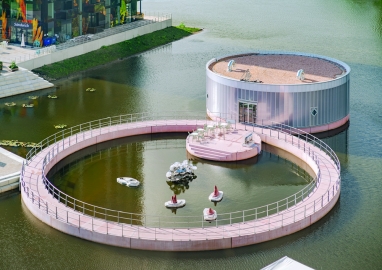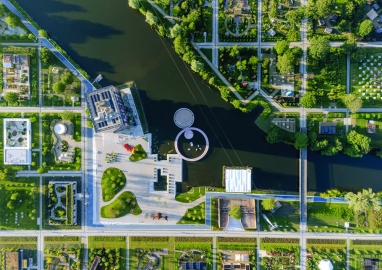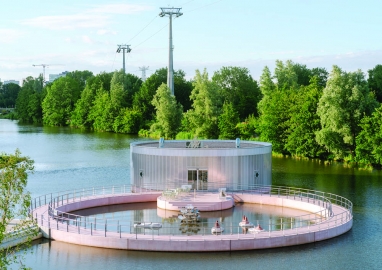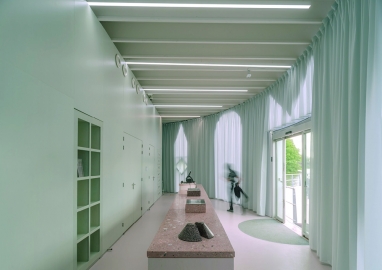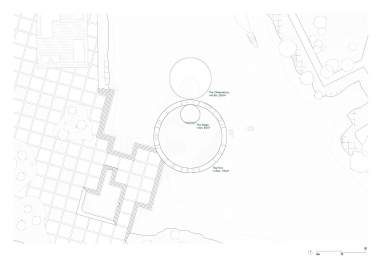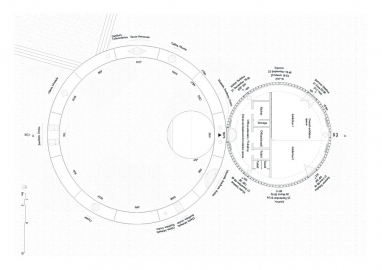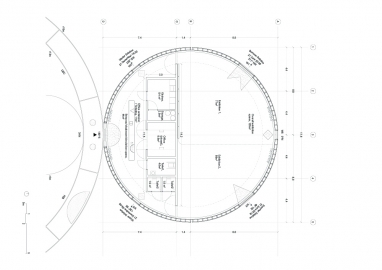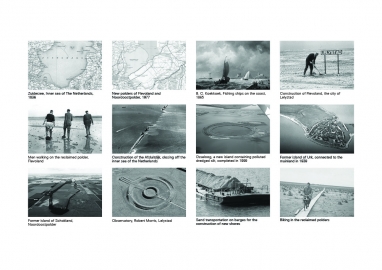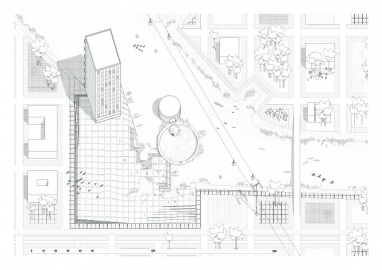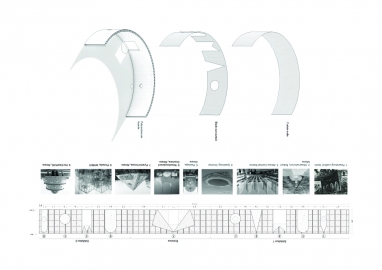Art Pavilion M.
Art Pavilion M. is a museum for multimedia art in Almere. It is composed by three circular elements - a pier, a terrace, and a pavilion - opening the institution to performances and installations on water, towards a water square framed by the ring. In 2023, M. was awarded the “Premio Italiano di Architettura under 35” by Milan’s Triennale and Rome’s MAXXI.
Art Pavilion M. is a museum of Land Art and Multimedia, designed for the waters of Weerwater in Almere (NL). It is a sequence of frames: a ring encircles a water plaza, to be curated and cultivated, for barges to dock its outer perimeter, and visitors to arrive by boat. It is a public space on water when the museum is closed, where one can swim or fish, and a promenade to the museum during opening hours; The terrace of the museum, within the ring, it is the day-to-day museum’s terrace, and can become a stage for performances, concerts or outdoor exhibitions; and the pavilion, a lightweight timber and polycarbonate structure, enclosing the exhibition rooms, filtering shades of water and surrounding vegetation like a greenhouse. It is enveloped by a curtain where cut-out shapes create a façade made by light, its openings aligned with the dawn and dusk of the summer and winter solstices.
M. began as a competition for a museum of Land Art and Multimedia in Almere, a city in the Netherlands built in the 1980s, in Flevoland. Flevoland is the result of the largest ‘reclamation’ work in the world, an area that was once the Zuider sea and was transformed into agricultural land in the 1920s. As the sea became land, creating and altering ecosystems, islands became mainland, sailors became factory workers, and marine ecologies, agricultural land. Over time, land art projects were commissioned, shores were redesigned, new lakes were born: such as the one where we worked on M. We proposed an urban project, readable as a water square, outwards looking, where the pavilion would be an observatory open to other scales, and the path towards it would define a new room for the museum and the city. It was built during COVID, with a spike in construction prices, and an urgency to complete the work before the opening of Floriade. It became a project about defining what is necessary: the four openings - more could not be afforded - look at planetary alignments, the floor insertions bring back the shells of the marine past, the façade is a game of light, drawn by transparencies in the textile.
M is conceived as a mineral plinth on water, upon which the pavilion and the artworks rest. The three circles are precast terrazzo and concrete elements, while the pavilion is a timber and polycarbonate structure, circled from within by a two- layered curtain, defining alternating facades during day and night. A functional block, hosting bathrooms, an office, and a kitchen, leaves free circulation along the perimeter, and the experience of the subtly changing light hue. The roof is covered in loose shells, filtering rain water.
We developed a material research for M., resulting in the ‘Surf and Turf’ terrazzo, a composite of local shells and horticultural supplies, embodying narratives of the place in the materiality. It has been used as insertions in the flooring of the pavilion the walkway, the counter, and furniture elements. The Ring is divided in 12 precast segments/months, a marine calendar of the 'harvest' of shells through terrace inserts with mussels, snails, clams, and oysters.
It is unknown if M. will remain in its place form more than 10 years: it has been built so that the pavilion may be disassembled, leaving behind the ring as a water square, open to the city.

